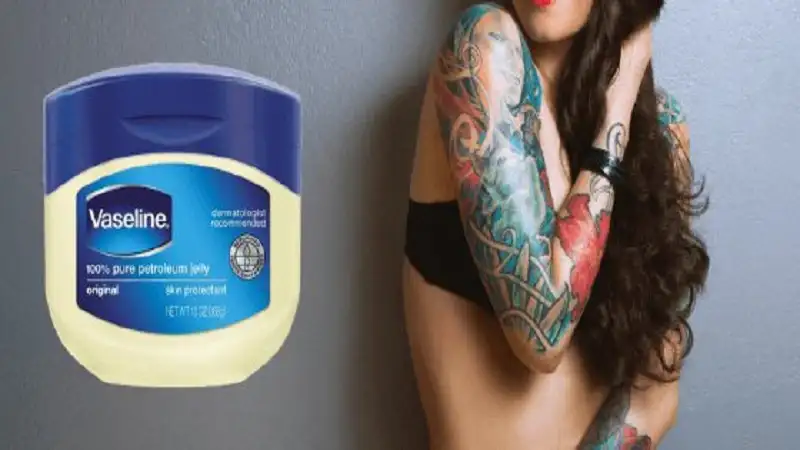When it comes to tattoo aftercare, there’s a plethora of advice available, ranging from traditional wisdom to modern scientific approaches. Among the myriad of products recommended, Vaseline, a well-known petroleum jelly brand, often comes up in conversations. But is it suitable for the care of a new tattoo? This article delves into the intricacies of using Vaseline on new tattoos, exploring the perspectives of dermatologists, tattoo artists, and the broader tattoo community.
Understanding the Healing Process
A new tattoo is essentially an open wound. The tattooing process involves puncturing the skin with needles to deposit ink, which inevitably causes skin trauma. This necessitates a healing process that typically unfolds in stages: initial healing, where the skin seals itself from external contaminants; intermediate healing, characterized by peeling and itching; and long-term healing, where the deeper layers of the skin continue to recover.
The Role of Moisture in Tattoo Aftercare
Maintaining appropriate moisture levels is crucial for new tattoos. Excessive dryness can lead to scab formation, which might interfere with the ink settling properly into the skin, potentially leading to patchiness or color loss. On the other hand, too much moisture can create an environment conducive to bacterial growth and infection.
Vaseline: A Double-Edged Sword
Vaseline is known for its occlusive properties, meaning it can create a barrier on the skin that locks in moisture. This characteristic can be both beneficial and detrimental in the context of tattoo aftercare.
Pros:
- Moisture Retention: By forming a barrier over the skin, Vaseline can prevent the tattoo from drying out, especially in harsh environmental conditions.
- Protection: It offers a layer of protection against external contaminants, reducing the risk of infection during the initial healing stage.
Cons:
- Occlusive Nature: Vaseline’s thick, occlusive barrier can trap heat and prevent the tattoo from ‘breathing.’ This may impede the natural healing process and potentially lead to issues like clogged pores, pimples, and even tattoo infections.
- Ink Displacement: Applying a heavy layer of Vaseline on a new tattoo might interfere with ink settling properly, affecting the clarity and vibrancy of the design.
Expert Opinions
Dermatologists often caution against the use of highly occlusive products like Vaseline on fresh tattoos. The consensus is that while maintaining moisture is key, ensuring the tattooed skin can adequately air out and heal is equally important. They recommend lighter, non-comedogenic products designed specifically for tattoo aftercare that won’t suffocate the skin.
Tattoo Artists have varying opinions on the matter. Some old-school artists might still recommend Vaseline for the first few days, citing its effectiveness in protecting the tattoo in very specific conditions (e.g., in highly polluted environments). However, the majority now lean towards specialized tattoo aftercare products that balance moisture retention with breathability.
Alternatives to Vaseline
Given the potential drawbacks of using Vaseline, exploring alternatives that support the tattoo healing process without compromising the skin’s ability to breathe is wise. Products to consider include:
- Tattoo-specific aftercare ointments: These are formulated to promote optimal healing, offering a balance between moisture retention and breathability.
- Natural oils and butters: Options like coconut oil, shea butter, and other light, natural moisturizers can be beneficial if used sparingly. They provide moisture without heavily occluding the skin.
- Fragrance-free, hypoallergenic lotions: Such lotions can keep the tattooed area hydrated without the risk of irritation or clogging pores.
Best Practices for Tattoo Aftercare
- Follow your tattoo artist’s advice: They know their craft and can recommend aftercare based on their experience and the specifics of your tattoo.
- Keep it clean: Gently wash the tattoo with mild soap and lukewarm water, patting it dry with a clean towel.
- Moisturize appropriately: Apply a thin layer of the recommended moisturizer or aftercare product to keep the tattoo slightly hydrated.
- Avoid sun exposure: Keep the tattoo out of direct sunlight to prevent fading and aid in healing.
- Wear loose clothing: This prevents irritation and allows the tattoo to breathe.
Conclusion
In conclusion, while Vaseline can provide temporary moisture retention and protection for a new tattoo, its occlusive nature poses risks that may outweigh the benefits. The evolving consensus among experts leans towards using products specifically designed for tattoo aftercare that support the skin’s natural healing process without causing additional complications. Always prioritize advice from your tattoo artist and consider consulting a dermatologist for personalized care recommendations, ensuring your new ink heals beautifully and lasts a lifetime.
